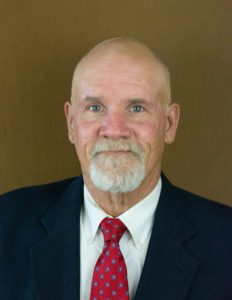Welcome into another journey in the world of safety! This time, the topic is about current training methods and communication. What hasn’t been said about training? Actually, the answer would probably be nothing, though perhaps that depends on who the recipient is. I hope to add a few insights and different perspectives today. One of the main criticisms I hear about safety presentations, regardless of the differences found among various companies, is that there is a lack of freshness in the presentations. Like the saying goes, no one likes a change except a baby. This is prevalent in all industries, including the oil and gas industry. Presentation, orientation, comprehension.
In 1967, there was a movie, a classic movie, by the name of Cool Hand Luke. It Starred Paul Newman, George Kennedy, and Strother Martin. It is a must-see if you have never seen it. There was a scene, a famous one at that, where Strother Martin was talking to Paul Newman (playing Luke in the movie). The line I am referring to that is a “must-see” is “What we have here is a failure to communicate.” If you have not seen the movie, you will never grasp how classic of a movie it was.
The point is (going back to change), our training methods hardly ever change. Everything else stays fairly up to date. Technology, people, culture, dynamics, economies, politics, equipment personnel, and even marital statuses are all subject to change. Yet, when we try to train our personnel, we have some antiquated methods of communicating. Some companies equate the size of the presentation screen as a kind of metric of the effectiveness of the communication. A larger screen is indeed nice and affords a certain amount of “equal opportunity” to see the training. But in general here I am talking about true effectiveness, which translates to responsiveness to training. In particular, responsiveness to effective updated training. Training that stays with the times to meet the needs of the recipient.
Some safety professionals are even looking at AI (artificial intelligence) as a method of interactive training, hoping that such training will function on the same level as the recipient. However, these days and times, I am happy if I just find natural human intelligence. Did I say that out loud? Aren’t we all?
Okay, I am back on topic now. Communication. In our industry, with the influx of immigrants, with its new young workers, it is critical to stay up with the times and be proactive in effective communication. Numerous new companies buy canned training, telling themselves that they are not quite able to afford the latest and greatest. The older companies, meanwhile, find an effective program and keep them for years until the material does become obsolete. Trying to apply old terminologies and methods to the younger generation just ends up creating a lost generation.
In today’s world, even kids use words—words they learned from school—that are foreign to me. So, just as frequently as rules change with OSHA, the means of communication in the working world should change with the times. We’re familiar with the idea that our computers today must talk to other computers. And we recognize that if our own computers are not current enough, they’ll not be able to have the “conversations” they need to have. I dare say today’s computers wouldn’t be able to talk to the Eniac, Commodore 64, Tandy TRS-80 or any other obsolete computer. So why do we not teach our people up-to-date, innovative training, just as we’d keep our computer systems up-to-date?
Lastly, if you get online and look at the training made available on YouTube.com for MSHA, you’ll see that that channel has a series of “We are Msha” training videos. You can get those online via search or find them on the OSHA website. But has anyone watched them? I’m not advocating they go out and hire Brad Pitt, Steven Spielberg, or anything, but the videos have musical backgrounds with ’60s music—the “ brown-chicken-brown-cow” music. They also have antiquated equipment in the background with PPE made from the ’60s. I saw a few trucks from the ’80s, I think. My point is the training is antiquated, not relevant. It is borderline obsolete, as well as antiquated and goofy. I’m surprised they don’t show people making copies for the tests with Mimeograph machines, where everyone can smell the paper afterwards.
So in order to land this plane, figuratively speaking, I’ll say that in all of the methods of communication (phones [which are themselves handheld computers], videos, forms of media, artificial intelligence, computers, and instant information) the methods of training we see in oil and gas safety training are significantly behind in the potential value of what it actually could be! Communication methods have advanced with technology so much, and yet the attention to communication and to the recipient (for meaningful comprehension) has diminished greatly. Comprehension. It has become more of a hood ornament than actual, meaningful communication, one on one.
The bottom line: Make your training and communication commensurate with the times.
Remember, it’s not how many hits you have in baseball—it is how many times you reach home safely.
—Dusty
Dusty Roach is a safety professional based in Midland. He is also a public speaker on subjects of leadership and safety, and he maintains a personal website at dustyroach.com.










